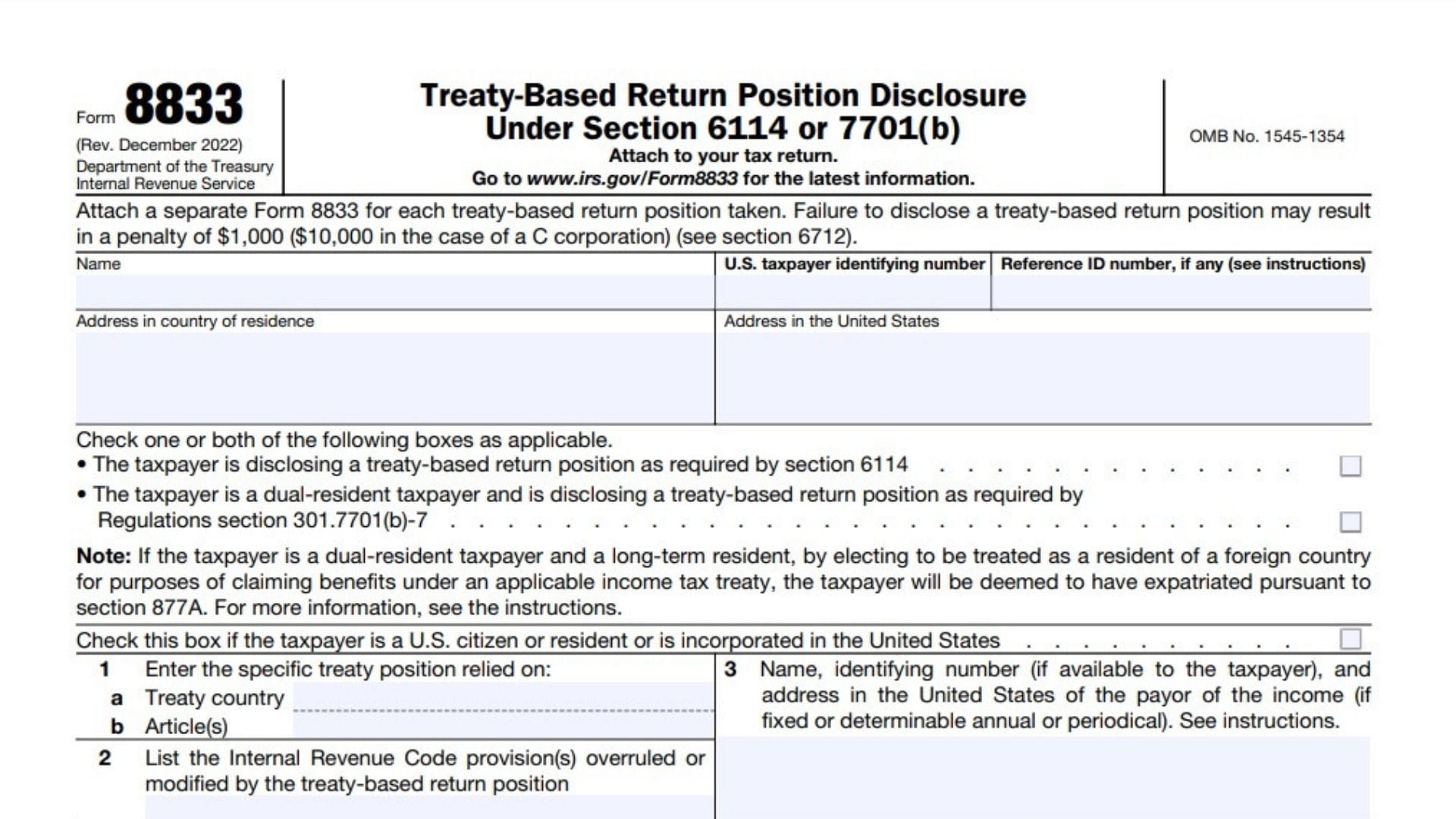IRS Form 8824, titled Like-Kind Exchanges, is a vital document for taxpayers who engage in the exchange of similar types of property, allowing them to defer capital gains taxes on the transaction. This form is specifically designed for reporting like-kind exchanges under Section 1031 of the Internal Revenue Code, which permits the deferral of taxes when one investment property is exchanged for another. In this article, we will discuss what IRS Form 8824 is, how to file it, and provide detailed line-by-line instructions for completing the form accurately.
What is IRS Form 8824?
Form 8824 is utilized by taxpayers to report like-kind exchanges of real property, which allows them to defer recognition of gain or loss for tax purposes. This form is essential when a taxpayer swaps one piece of real estate for another that is considered “like-kind,” meaning both properties are of the same nature or character. The IRS requires this form to ensure that taxpayers comply with tax regulations regarding the deferral of gains from such exchanges. Properly completing Form 8824 helps taxpayers avoid immediate tax liabilities that would otherwise arise from the sale of a property.
How to File IRS Form 8824
To file Form 8824, follow these steps:
- Complete your primary tax return (e.g., Form 1040 or Form 1120).
- Attach Form 8824 to your tax return.
- If you are not required to file a tax return otherwise, submit Form 8824 directly to the IRS Service Center where you would typically file your return.

How to Complete IRS Form 8824?
Here’s a detailed guide on how to fill out each line of IRS Form 8824:
- Name(s) shown on tax return: Enter your name(s) as they appear on your primary tax return.
- Identifying number: Provide your Social Security Number (SSN) or Employer Identification Number (EIN).
Part I: Information on the Like-Kind Exchange
- Description of like-kind property given up: Describe the property you are exchanging.
- Description of like-kind property received: Describe the property you are acquiring.
- Date like-kind property given up was originally acquired: Enter the acquisition date in MM/DD/YYYY format.
- Date you actually transferred your property to the other party: Provide the transfer date in MM/DD/YYYY format.
- Date like-kind property you received was identified: Enter the identification date in MM/DD/YYYY format.
- Date you actually received the like-kind property from other party: Provide this date in MM/DD/YYYY format.
- Related Party Exchange: Indicate if the exchange involved a related party (Yes/No). If yes, complete Part II; if no, proceed to Part III.
Part II: Related Party Exchange Information
- Name of related party: Enter the name of any related party involved in the exchange.
- Relationship to you: Specify your relationship with the related party.
- Related party’s identifying number: Provide their identifying number if applicable.
- Sales or disposals by related parties: Answer whether any part of the exchanged property was sold or disposed of by either party during this tax year (Yes/No).
Part III: Realized Gain or (Loss), Recognized Gain, and Basis of Like-Kind Property Received
- Fair market value (FMV) of other property given up: Enter the FMV if applicable.
- Adjusted basis of other property given up: Provide this figure as required.
- Gain or (loss) recognized on other property given up: Calculate and report any recognized gain or loss here.
- Cash received and other properties received: Enter any cash received plus FMV of other properties involved in the exchange.
- FMV of like-kind property received: State the FMV of the like-kind property you received.
- Total Amounts: Add lines 15 and 16 together.
- Adjusted basis of like-kind property given up: Enter this amount based on your records.
- Realized gain or (loss): Subtract line 18 from line 17 to find your realized gain or loss.
- Recognized gain calculation: Enter here the smaller amount between line 15 or line 19 but not less than zero.
- Ordinary income under recapture rules: Report any ordinary income here as applicable.
- Subtract ordinary income from recognized gain: Provide this calculation result here for reporting on Schedule D or Form 4797.
- Recognized gain total: Add lines 21 and 22 together for total recognized gain.
- Deferred gain or (loss): Calculate deferred gain/loss by subtracting line 23 from line 19.
- Basis of like-kind property received: Subtract line 15 from the sum of lines 18 and 23 for basis calculation.
Part IV: Deferral of Gain From Section 1043 Conflict-of-Interest Sales
This section is specifically for officers or employees of the executive branch of the federal government, as well as judicial officers, who need to report nonrecognition of gain under section 1043 on the sale of property to comply with conflict-of-interest requirements. This part should only be used if the cost of the replacement property exceeds the basis of the divested property.
- Line 26: Enter the number from the upper right corner of your certificate of divestiture. (Do not attach a copy of your certificate; keep it with your records.)
- Line 27: Provide a description of the divested property.
- Line 28: Describe the replacement property.
- Line 29: Enter the date when the divested property was sold (in MM/DD/YYYY format).
- Line 30: State the sales price of the divested property. Refer to instructions for any specific guidelines.
- Line 31: Enter the basis of the divested property.
- Line 32: Calculate and enter the realized gain by subtracting line 31 from line 30.
- Line 33: Provide the cost of the replacement property purchased within 60 days after the date of sale.
- Line 34: Subtract line 33 from line 30. If this results in zero or less, enter -0-.
- Line 35: Enter any ordinary income under recapture rules here and also on Form 4797, line 10.
- Line 36: Subtract line 35 from line 34. If this results in zero or less, enter -0-. If more than zero, enter this amount on Schedule D or Form 4797, as instructed.
- Line 37: Calculate deferred gain by subtracting the sum of lines 35 and 36 from line 32.
- Line 38: Calculate and enter the basis of replacement property by subtracting line 37 from line 33.
Final Steps
After completing all sections:
- Review all entries for accuracy.
- Ensure that you have attached it correctly to your primary tax return.
- Submit your completed forms by their respective due dates.
